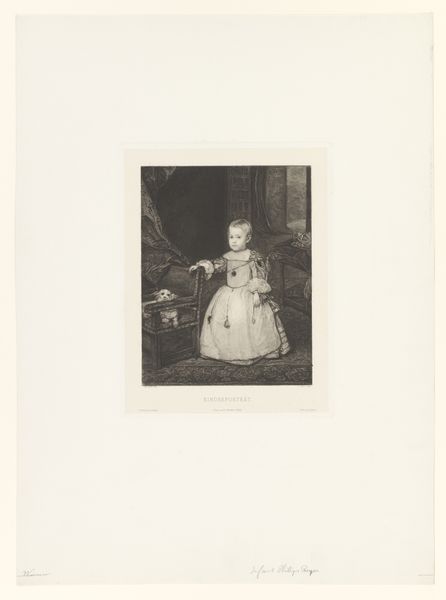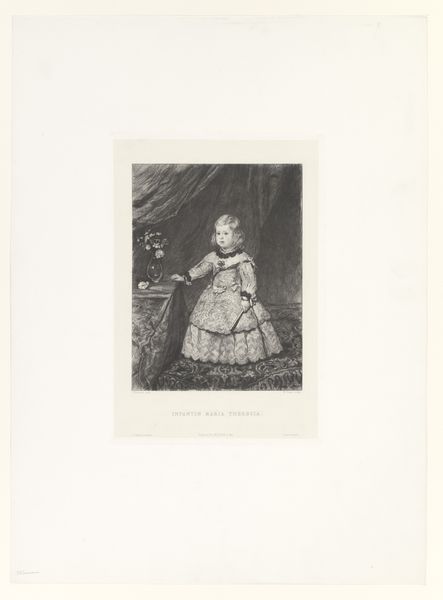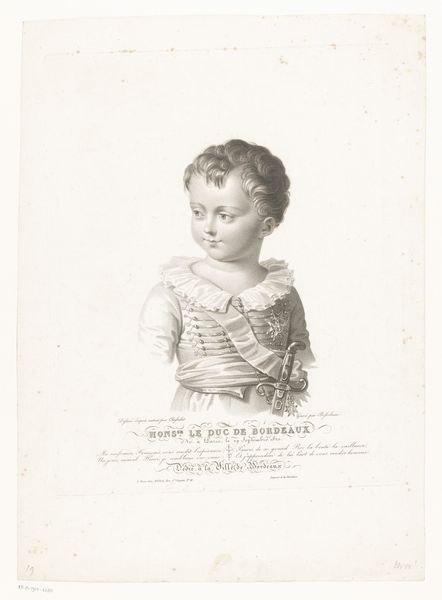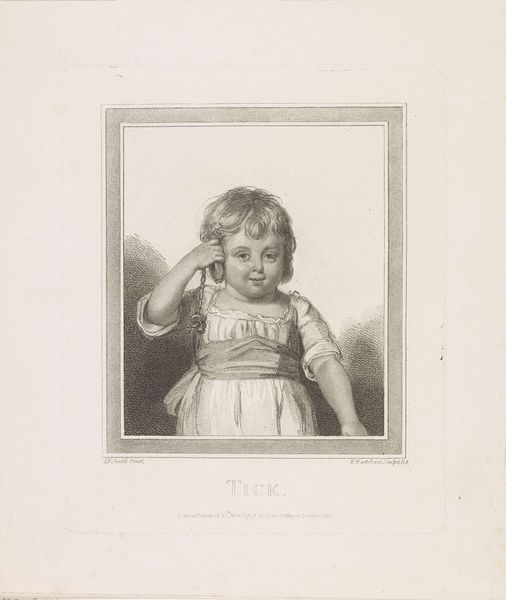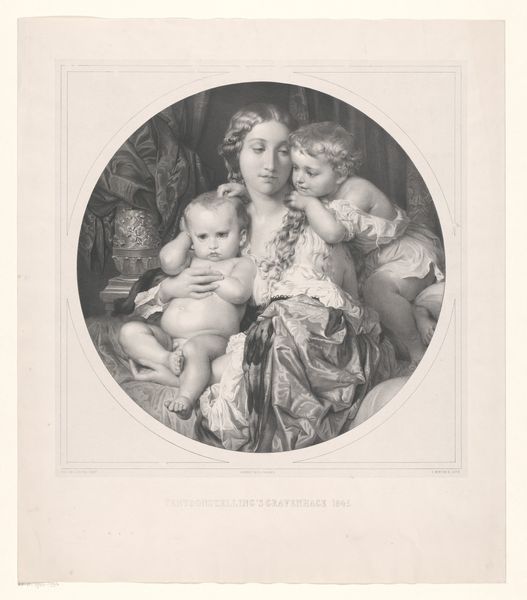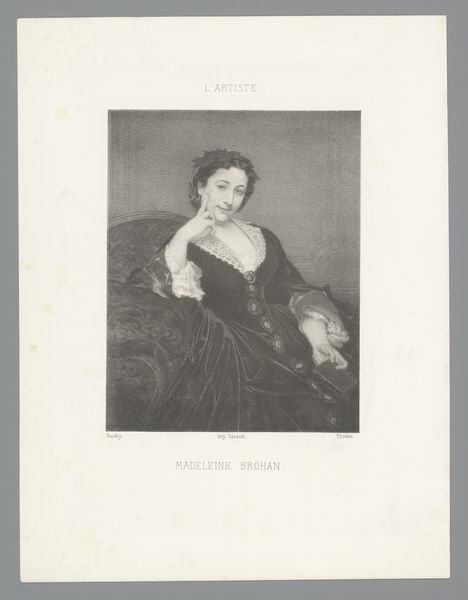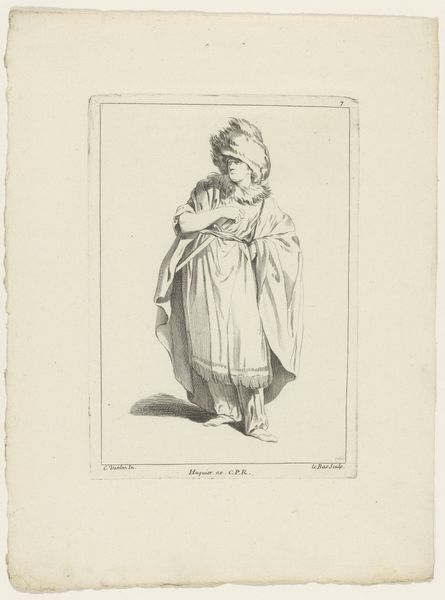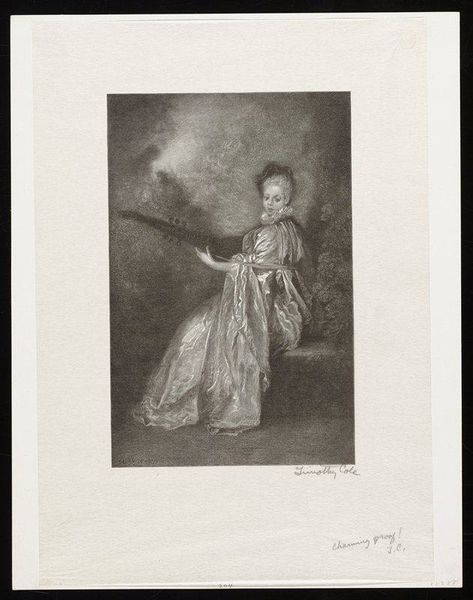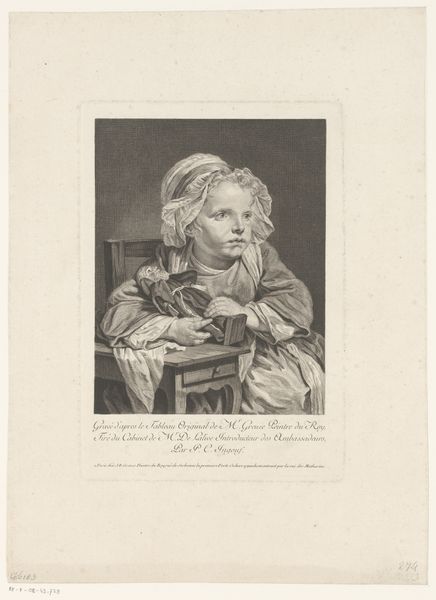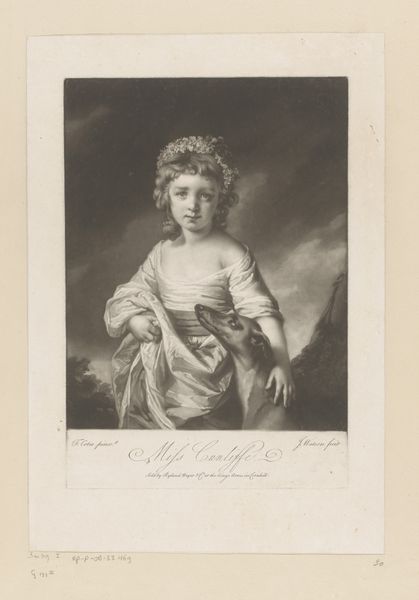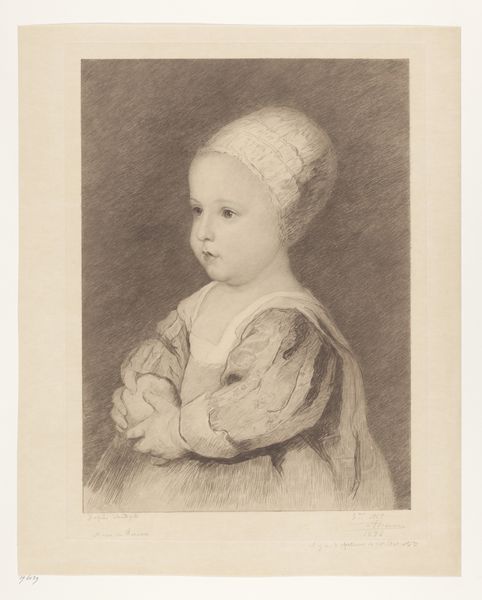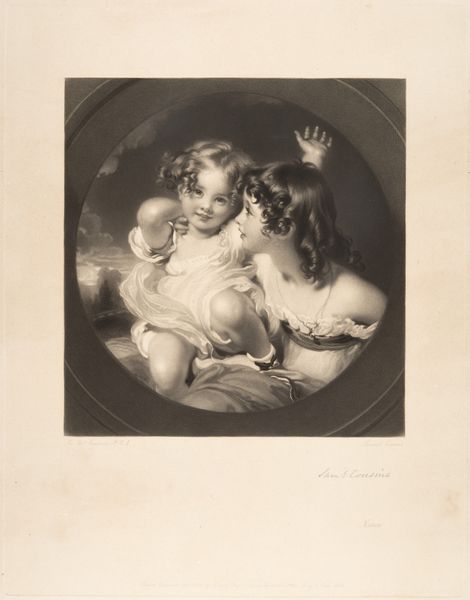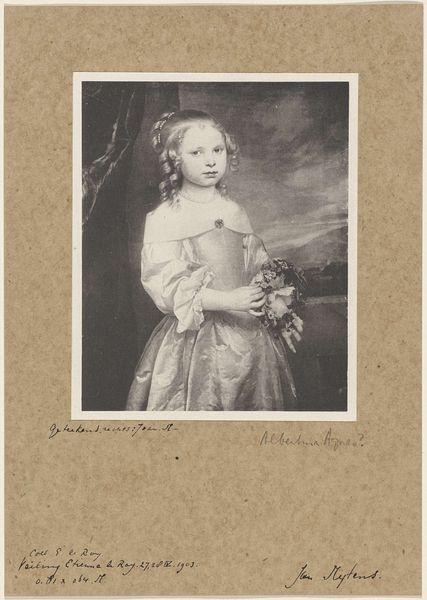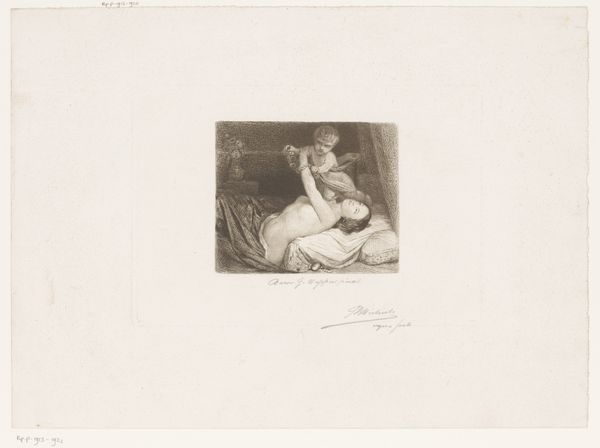
Dimensions: height 551 mm, width 417 mm
Copyright: Rijks Museum: Open Domain
Editor: This is "Kind zit rechtop in bed en kijkt omhoog," or "Child sitting upright in bed and looking up," an engraving by Samuel Cousins from around 1854-1855. It's striking how vulnerable the child looks, sitting there in bed. What historical narratives might be influencing this portrayal? Curator: Considering this piece was produced during the Romantic era, think about the socio-political function of sentimental imagery. The image leans heavily into a sort of Victorian ideal of childhood innocence. Consider also that portraiture at this time served to reflect and solidify social hierarchies. Editor: So, the vulnerability might be less about genuine concern and more about projecting societal ideals? Curator: Precisely. The engraving's medium allows for mass reproduction and distribution. Who do you imagine was the target audience for such a print? Editor: Likely middle- or upper-class families. Displaying this would signal their adherence to these Victorian values, demonstrating a certain moral standing. Curator: Exactly. The child’s upward gaze also hints at piety, reinforcing the connection between innocence and religious virtue, promoted by many institutions. Do you think the fact that this image is a print, and not an original painting, changes our perception of it? Editor: It makes it feel less like a unique artwork, and more like a statement of the cultural norms. Like the artist and buyer participate in promotion of societal virtues. Curator: It becomes a cultural artifact itself. Editor: It’s unsettling to think that even artistic expressions of seemingly simple themes are actually tangled in politics of imagery! Thanks, I appreciate your insight. Curator: My pleasure. Considering art’s historical context transforms how we experience it.
Comments
No comments
Be the first to comment and join the conversation on the ultimate creative platform.
